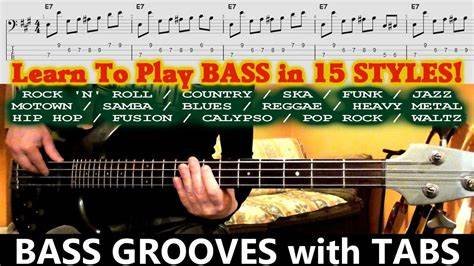As a bass guitar player, improving your skills is essential for your musical journey. Focusing on effective exercises for bass guitar players can significantly enhance your technique, rhythm, and overall musicianship. In this article, we’ll share some of the best exercises to help you grow as a bassist.
Understand the Importance of Practice
Before going into specific exercises for bass guitar players, it’s crucial to understand the importance of consistent practice. Regular practice not only helps you build muscle memory but also strengthens your ability to play with precision and confidence. Establishing a routine will set the foundation for improvement, so make sure to dedicate time each day to practice your exercises.

Warm-Up Exercises
Starting your practice session with warm-up exercises is vital. These exercises prepare your fingers and hands for playing and help prevent injury. One effective warm-up is to play chromatic scales. Begin on the lowest fret of the lowest string and play each note sequentially up to the highest fret. This exercise improves finger strength and dexterity, which are crucial for playing bass.
Scales and Arpeggios
Incorporating scales and arpeggios into your routine is one of the best exercises for bass guitar players. Practicing major and minor scales helps you understand music theory and improve your finger positioning. Focus on playing these scales in different positions and patterns across the neck.
Arpeggios, which are the notes of a chord played individually, are equally important. They help you develop your ear and improve your ability to navigate chord changes smoothly. Try playing arpeggios for major, minor, and seventh chords to expand your skill set.
Finger Exercises
To develop finger strength and agility, specific finger exercises can be very beneficial. One effective exercise is to play two notes on each string with your index and middle fingers, alternating between them. For example, play the open string with your index finger and then fret the second note with your middle finger. This exercise not only builds strength but also promotes coordination between your fingers.
Another great finger exercise is the “1-2-3-4” exercise, where you use each finger (index, middle, ring, pinky) to play the frets in sequence on each string. Start on the first fret of the lowest string, and move up to the highest fret. This exercise helps improve finger independence and stretches your hand.
Playing Along with Songs
One of the most enjoyable exercises for bass guitar players is playing along with your favorite songs. This exercise helps you develop timing and rhythm while allowing you to apply what you’ve learned in a musical context. Choose songs that challenge your skill level and require you to pay attention to the bassline. Playing along with recordings also helps you learn how to lock in with the drums and other instruments.
Improvisation
Improvisation is an excellent way to enhance your creativity as a bass player. Set a metronome to a slow tempo and play different notes over a chord progression. Experiment with different rhythms and note choices to create your bassline. This exercise helps you think on your feet and encourages you to explore various musical ideas.
Slap and Pop Techniques
If you’re interested in funk or slap bass styles, practicing slap and pop techniques is essential. Start with the basic slap technique by using the thumb to strike the string and produce a percussive sound. Follow this by using your fingers to pop the strings. Incorporate these techniques into your exercises for bass guitar players to add a new dimension to your playing.
Transcribing Basslines
Transcribing basslines from your favorite songs is another effective exercise. Listen closely to the bass parts and write them down note by note. This exercise develops your ear for music and helps you understand how basslines are constructed. Additionally, playing these transcribed lines reinforces your technique and helps you learn different styles.
Use a Metronome
Practicing with a metronome is one of the best ways to improve your timing and rhythm. Start slow and gradually increase the tempo as you become more comfortable with your exercises for bass guitar players. A steady beat helps you develop a strong sense of timing, which is essential for any musician.
Record Yourself
Recording yourself while practicing is a valuable exercise. This allows you to listen back and evaluate your playing. Pay attention to your timing, note accuracy, and overall sound. Identifying areas for improvement will help you focus your practice sessions and track your progress over time.
Conclusion
Incorporating these exercises for bass guitar players into your practice routine can greatly enhance your skills and musicianship. From warm-up exercises to playing along with songs, each exercise serves a purpose in developing your technique, timing, and creativity. Remember that consistent practice is key to improvement. By dedicating time to these exercises, you’ll become a more confident and versatile bassist.







